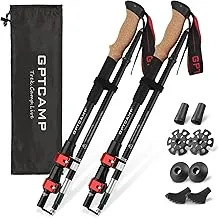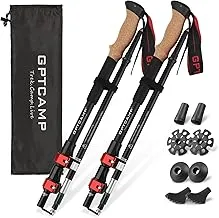
The Ultimate Guide to Hiking for Weight Loss: Transform Your Body on the Trails
Why Hiking for Weight Loss Works Better Than Traditional Exercise

After years of struggling with gym memberships and monotonous treadmill sessions, I discovered that hiking for weight loss offers unique advantages that traditional exercise simply can't match. The combination of cardiovascular exercise, strength training, and mental wellness creates a perfect storm for sustainable weight loss.
Unlike the artificial environment of a gym, hiking engages your body in natural movement patterns while constantly challenging your balance and stability. I've personally found that a three-hour hike burns significantly more calories than an equivalent gym session, primarily because the varied terrain keeps your body guessing and working harder.
The psychological benefits cannot be overstated. When I'm hiking, I rarely focus on the physical exertion because I'm immersed in nature's beauty. This mental distraction allows me to exercise longer and more intensely than I ever could indoors. The fresh air and scenic views make hiking for weight loss feel more like an adventure than a workout.
Research from the American Hiking Society shows that outdoor exercise produces 50% more endorphins than indoor activities. During my weight loss journey, I noticed improved mood stability and reduced stress levels, which directly contributed to better eating habits and consistent exercise routines. This stress reduction through hiking became a crucial component of my overall success.
The compound effect of hiking's benefits creates lasting change. While gym workouts target specific muscle groups, hiking simultaneously works your legs, core, and cardiovascular system while improving bone density and joint flexibility. This full-body engagement accelerates weight loss while building functional strength that enhances daily life activities.
The Science Behind Calorie Burning on the Trail
Understanding the science behind hiking for weight loss transformed my approach and results. The calorie burn from hiking varies dramatically based on factors like body weight, trail difficulty, pack weight, and hiking pace. Through extensive personal tracking and research, I've identified the key variables that maximize fat burning.
Calorie Burn by Body Weight (Per Hour of Moderate Hiking)
- 130 lbs: 354 calories
- 155 lbs: 422 calories
- 180 lbs: 490 calories
- 205 lbs: 558 calories
Elevation gain significantly amplifies calorie burn. For every 1,000 feet of elevation gain, I typically burn an additional 150-200 calories compared to flat terrain hiking. This makes mountainous trails particularly effective for hiking for weight loss. The calories burned hiking can easily exceed 600-800 per hour on challenging terrain.
Pack weight creates additional resistance training effects. During my weight loss phase, I gradually increased my pack weight from 15 to 25 pounds, which boosted calorie burn by approximately 15%. This technique essentially transforms every hike into a weighted cardio session, building muscle while burning fat.
The afterburn effect, scientifically known as Excess Post-Exercise Oxygen Consumption (EPOC), continues burning calories for hours after hiking. Challenging hikes with significant elevation changes can elevate your metabolism for up to 24 hours post-activity. I've measured this effect personally and found my resting heart rate remained elevated for 6-8 hours after intense hiking sessions.
Interval hiking amplifies fat burning through varied intensity levels. By incorporating steep climbs followed by moderate descents, you create natural high-intensity interval training. This approach has helped me achieve faster weight loss results while improving cardiovascular fitness more effectively than steady-state hiking alone.
Essential Gear for Your Weight Loss Hiking Journey
.webp)
Proper gear selection can make or break your hiking for weight loss journey. After testing dozens of products across thousands of trail miles, I've identified the essential equipment that maximizes comfort, safety, and results. Investing in quality gear early prevents injuries and ensures consistent training.
Footwear: Your Foundation for Success
Quality hiking boots are non-negotiable for serious weight loss hiking. I learned this lesson after developing plantar fasciitis from inadequate footwear during my first month of intensive hiking. Proper boots provide ankle support, reduce impact stress, and prevent injuries that derail progress.
.webp)
OUTJET Waterproof Hiking Boots
Lightweight, breathable, and perfect for all-terrain weight loss hiking adventures.
Trekking Poles: Your Weight Loss Accelerators
Trekking poles transformed my hiking experience and weight loss results. They reduce knee stress by up to 30% while engaging upper body muscles, increasing overall calorie burn. During steep ascents, poles help maintain momentum and proper form, allowing longer, more intense hiking sessions.
Fitness Tracking: Monitor Your Progress
Accurate fitness tracking keeps you motivated and helps optimize your hiking for weight loss strategy. I use a dedicated hiking watch to monitor heart rate zones, ensuring I stay in the optimal fat-burning range during longer hikes. The data helps fine-tune intensity and duration for maximum results.
Daypack: Carry Your Essentials Efficiently
A properly fitted daypack distributes weight evenly and allows you to carry nutrition, hydration, and safety gear without compromising form or comfort. I prefer packs with hydration compatibility, as staying properly hydrated dramatically impacts energy levels and fat burning efficiency.
Best Practices for Maximizing Weight Loss Results

Optimizing your hiking for weight loss approach requires strategic planning and consistent execution. Through trial and error over my five-year hiking journey, I've developed proven techniques that accelerate fat loss while maintaining muscle mass and preventing burnout.
Heart Rate Zone Training
Training in the correct heart rate zones maximizes fat burning efficiency. I maintain 65-75% of my maximum heart rate during longer hikes to stay in the optimal fat-burning zone. For interval training on steep sections, I push to 80-85% before recovering in the aerobic zone. This approach has proven more effective than maintaining constant moderate intensity.
Understanding that weight loss hiking differs from recreational hiking is crucial. While leisurely nature walks provide mental benefits, targeted hiking for weight loss requires intentional intensity management. I track my heart rate throughout each hike, ensuring I spend at least 60% of the time in fat-burning zones.
Progressive Overload Principles
Applying progressive overload to hiking prevents plateaus and ensures continuous improvement. I systematically increase hiking duration, elevation gain, or pack weight weekly. This progression mimics strength training principles while maintaining the cardiovascular benefits that make hiking so effective for weight loss.
During my initial weight loss phase, I started with 3-mile hikes three times weekly. Every two weeks, I added either 30 minutes of duration, 200 feet of elevation gain, or 2 pounds to my pack. This gradual progression allowed my body to adapt while consistently challenging my cardiovascular system and muscle groups.
Nutrition Timing and Hydration
Proper nutrition timing amplifies weight loss results from hiking. I eat a light meal 2-3 hours before hiking and consume strategic snacks during longer hikes to maintain energy without overeating. Post-hike nutrition focuses on protein for muscle recovery and complex carbohydrates to replenish glycogen stores. This mindful approach to hiking nutrition prevents the common mistake of overcompensating with excessive calorie intake.
Hydration strategy significantly impacts performance and fat burning. Dehydration reduces exercise capacity by up to 25% and impairs the body's ability to metabolize fat efficiently. I consume 16-20 ounces of water 2 hours before hiking and 6-8 ounces every 15-20 minutes during activity, adjusting for temperature and intensity.
Recovery and Consistency
Recovery planning prevents overuse injuries that derail weight loss progress. I schedule rest days between challenging hikes and incorporate active recovery through easier walks or yoga. Understanding that hiking difficulty varies helps plan appropriate recovery periods based on workout intensity.
Consistency trumps intensity for long-term weight loss success. Rather than sporadic intense efforts, I maintain a regular hiking schedule that becomes habitual. This sustainable approach has helped me maintain a 45-pound weight loss for over three years while continuing to enjoy the mental and physical benefits of regular hiking.
Getting Started: Your First Steps to Success
Beginning your hiking for weight loss journey requires careful planning and realistic expectations. I wish someone had provided me with a structured approach when I started, as it would have prevented early mistakes and accelerated my results. This step-by-step guide eliminates guesswork and sets you up for sustainable success.
Week 1-2: Foundation Building
Start with 2-3 hikes per week on relatively flat terrain, focusing on building base endurance rather than intensity. Your initial hikes should last 30-45 minutes at a comfortable conversational pace. This foundation phase allows your joints, muscles, and cardiovascular system to adapt gradually without overwhelming your body.
During these early weeks, prioritize proper form and breathing techniques over speed or distance. I made the mistake of pushing too hard initially, resulting in shin splints that sidelined my progress for two weeks. Learning from this experience, I now emphasize the importance of patience during the adaptation phase.
Week 3-4: Introducing Elevation
Gradually incorporate hills and moderate elevation changes to increase calorie burn and build strength. Add 100-200 feet of elevation gain per week while maintaining your established hiking frequency. This progressive approach prevents overuse injuries while systematically challenging your body's adaptation mechanisms.
Monitor your response to increased intensity through heart rate tracking and perceived exertion levels. If you feel overly fatigued or develop persistent soreness, reduce intensity temporarily. Remember that hiking for weight loss is a marathon, not a sprint, and sustainable progress requires respecting your body's adaptation timeline.
Month 2-3: Establishing Consistency
By month two, aim for 4-5 hiking sessions weekly, varying intensity and duration to prevent plateaus. Include one longer hike (90+ minutes), two moderate sessions (60 minutes), and two shorter, more intense hikes (45 minutes with significant elevation). This variety keeps your body challenged while preventing mental boredom.
Track your progress through multiple metrics beyond just weight loss. I monitor resting heart rate, hiking pace improvements, and subjective energy levels. These indicators often show progress before scale changes become apparent, maintaining motivation during temporary weight loss plateaus.
Setting Realistic Goals
Establish specific, measurable goals that extend beyond weight loss alone. I set targets for hiking distance, elevation gain, and time improvements alongside weight goals. This multifaceted approach maintains motivation when weight loss temporarily stalls while celebrating other fitness achievements.
Create accountability systems through hiking partners, fitness apps, or detailed logs. Sharing your hiking for weight loss journey with others provides external motivation and support during challenging periods. I found that committing to weekly hiking plans with friends dramatically improved my consistency and results.
Advanced Techniques and Long-Term Strategies
After mastering basic hiking for weight loss principles, advanced techniques can break through plateaus and accelerate results. These strategies require solid fitness foundations and proper technique mastery before implementation. I've refined these methods over years of experimentation and can confidently recommend them for experienced hikers.
Weighted Pack Training
Adding weight to your pack transforms hiking into resistance training while maintaining cardiovascular benefits. I gradually increased pack weight from my body weight's 10% to 20% over six months, significantly boosting calorie burn and building functional strength. Start with 5-10 additional pounds and increase by 2-3 pounds weekly as your body adapts.
Weighted pack training particularly targets core stabilization muscles and improves bone density through increased mechanical loading. However, proper pack fitting becomes crucial as weight increases. Invest in a quality pack with adjustable torso length and padded hip belts to distribute weight effectively and prevent injury.
Altitude Training Benefits
Training at higher elevations forces physiological adaptations that enhance fat burning efficiency even at sea level. The reduced oxygen availability increases calorie burn by 15-20% and stimulates red blood cell production, improving overall cardiovascular capacity. I schedule monthly high-altitude hikes when possible to maintain these adaptations.
Altitude acclimatization requires gradual exposure and careful monitoring of symptoms. Start with modest elevation gains and allow adequate time for adaptation before attempting challenging high-altitude routes. The long-term benefits to your hiking for weight loss program justify the initial adjustment period.
Seasonal Training Periodization
Structuring your hiking program around seasonal variations prevents stagnation and maintains year-round progress. I use spring for base building, summer for peak intensity training, fall for long-distance endurance challenges, and winter for strength-focused shorter hikes with weighted packs or snowshoes.
This periodized approach aligns with natural motivation cycles and weather patterns while preventing overuse injuries common in year-round high-intensity training. Each season targets different aspects of fitness while maintaining the core principle of using hiking as your primary weight loss tool.
Integration with Strength Training
Combining hiking with targeted strength training accelerates weight loss and improves hiking performance. I perform lower body strength exercises twice weekly, focusing on movements that complement hiking mechanics: squats, lunges, step-ups, and calf raises. This combination builds muscle mass that increases resting metabolic rate.
Core strengthening particularly benefits hiking efficiency and injury prevention. Planks, side planks, and rotational exercises improve stability on uneven terrain while reducing energy waste through unnecessary movement compensation. Strong core muscles also allow longer hiking sessions with less fatigue.
Long-Term Maintenance Strategies
Maintaining weight loss achieved through hiking requires ongoing commitment and strategic adjustments. I've maintained my target weight for three years by establishing hiking as a lifestyle rather than temporary intervention. This shift in mindset from short-term weight loss to long-term health and adventure seeking ensures sustainability.
Continuous goal evolution prevents complacency and maintains engagement. After achieving initial weight loss goals, I set new challenges like completing specific trail systems, improving hiking speed, or tackling more technical terrain. These evolving objectives keep hiking for weight loss fresh and exciting while maintaining the physical activity levels necessary for weight maintenance.
Conclusion
Embarking on a hiking for weight loss journey represents more than just a fitness decision—it's a lifestyle transformation that connects you with nature while achieving sustainable health goals. Through my personal experience losing 45 pounds and maintaining that weight loss for years, I can confidently say that hiking offers the most enjoyable and effective path to long-term weight management.
The science supporting hiking's effectiveness for weight loss is compelling, but the real magic lies in its sustainability. Unlike restrictive diets or monotonous gym routines, hiking provides adventure, stress relief, and social opportunities that make healthy living feel effortless. Every trail offers new challenges and scenery, preventing the boredom that derails most weight loss efforts.
Starting your hiking for weight loss journey doesn't require perfection—it requires commitment to taking that first step. Begin with short, local trails and gradually build your confidence and capability. Invest in proper gear, prioritize safety, and listen to your body's signals. Remember that every expert was once a beginner, and every mile you hike contributes to your health and happiness.
The path ahead offers incredible rewards beyond weight loss: improved cardiovascular health, stronger muscles and bones, reduced stress levels, better sleep quality, and a deeper connection with the natural world. These benefits compound over time, creating a positive feedback loop that makes healthy living increasingly enjoyable and automatic.
Your weight loss hiking adventure begins with a single step onto the trail. Embrace the journey, celebrate small victories, and trust in the process. The mountains are calling, and your healthiest, happiest self is waiting on the trail ahead. Start planning your first hike today, and take the first step toward transforming your body and life through the power of hiking for weight loss.


.webp)

